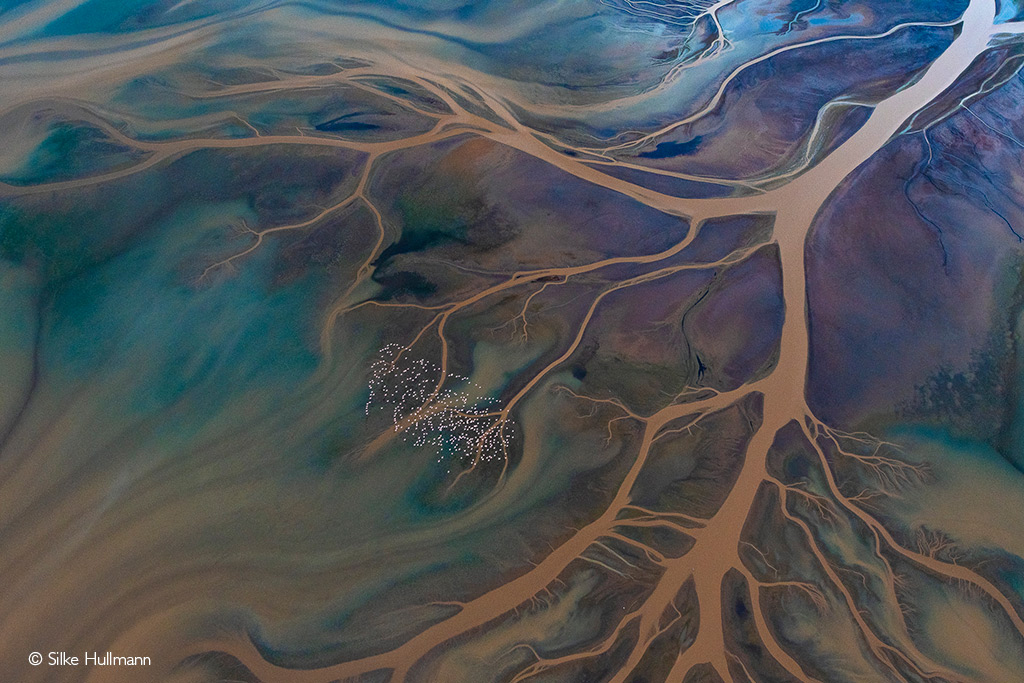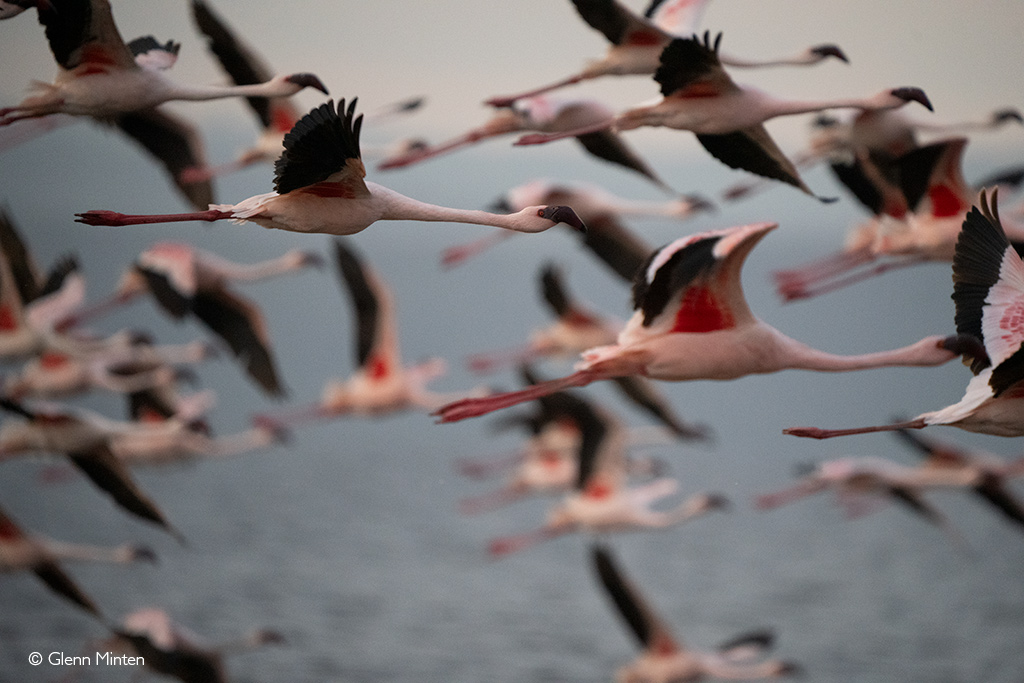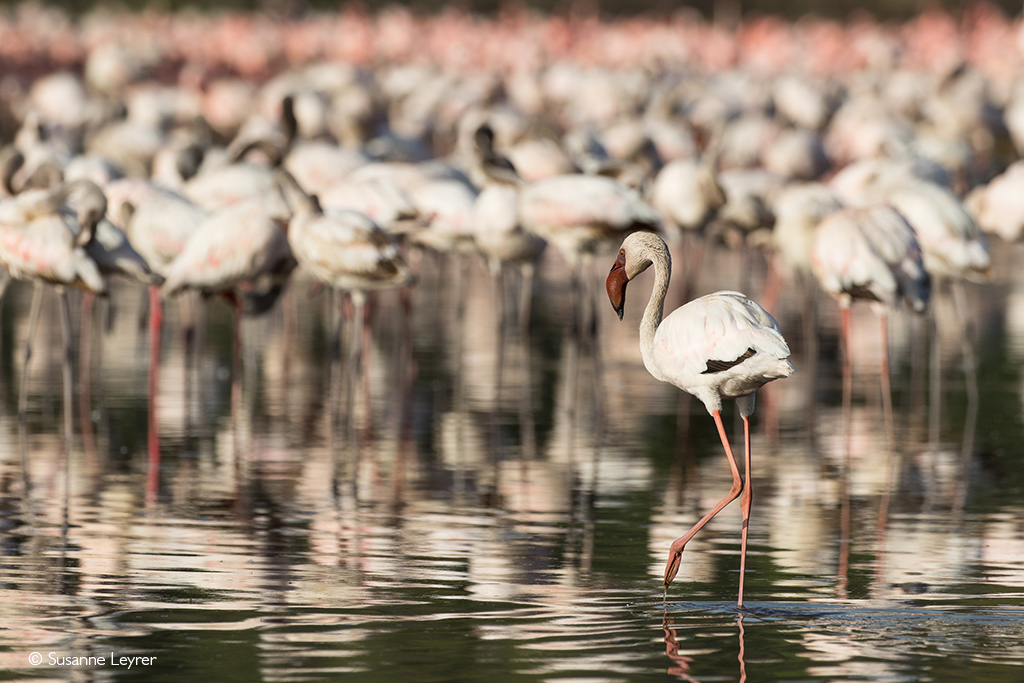 East Africa’s dazzling flamingo populations have long enchanted visitors with their vibrant pink plumage and spectacular gatherings on the region’s soda lakes. But as climate change transforms these delicate ecosystems, scientists warn that these iconic birds face an uncertain future. New research reveals that rising rainfall levels and shifting lake conditions are threatening the flamingos’ feeding and breeding grounds, forcing populations into a precarious situation where their survival hangs in the balance.
East Africa’s dazzling flamingo populations have long enchanted visitors with their vibrant pink plumage and spectacular gatherings on the region’s soda lakes. But as climate change transforms these delicate ecosystems, scientists warn that these iconic birds face an uncertain future. New research reveals that rising rainfall levels and shifting lake conditions are threatening the flamingos’ feeding and breeding grounds, forcing populations into a precarious situation where their survival hangs in the balance.
Vibrant splashes of pink dot sparkling lakes, a lively contrast against the deep blue waters. Large, flamboyant flocks of lesser flamingos gather along the shores and shallows, their vibrant feathers catching the sun’s rays. It is a breathtaking spectacle with thousands of elegant pink birds socialising, feeding, and enjoying Africa’s beautiful soda lakes. Scenes like these are often seen in nature documentaries and are synonymous with East Africa’s lakes. However, things are slowly changing, and it is not necessarily a good thing for the lesser flamingos that call these salty lakes home.
The soda lake ecosystems are rich in nutrients and usually an excellent habitat for lesser flamingos. Unlike most other freshwater ecosystems, the unique alkaline and salty lakes provide a vital habitat. Specialised algal and microbial communities that form the foundation of these productive aquatic environments thrive in these conditions. Various organisms, from tiny invertebrates to fish, have evolved here and occur nowhere else. However, few depend on these landscapes more than the iconic lesser flamingo, with over three-quarters of the global population (with a total population of 2-3 million birds) residing within the soda lakes stretching across East Africa.


Lesser flamingos filter feed on plankton and cyanobacteria in the dense flocks for which they are famous. These flamboyances depend on the specialised soda lake habitats found mainly in Ethiopia, Kenya, and Tanzania, such as Lake Bogoria and Lake Nakuru (both in Kenya), which supported more than 1 million birds until recently. Tanzania’s Lake Natron is the only consistent regular breeding site for lesser flamingos.
Aidan Byrnes, PhD candidate at King’s College in London explains that the extreme water chemistry in soda lakes is due to natural geological, climatic and geographic processes. “High levels of nutrients, salinity and pH accumulate because the lakes often lie in closed basins with no surface outflow and water levels are determined by the balance between rainfall and evaporation. Salts and nutrients from rocks, underground hot springs and lake catchments accumulate in the water bodies.”

New research conducted by Byrnes and his team suggests that these iconic birds, already listed as near threatened according to the IUCN Red List of Threatened Species, have reached a conservation crossroads. Scientists are sounding the alarm that rising lake levels linked to climate change could push some populations past the point of no return.
This study used more than two decades’ worth of satellite data (1999–2022) to determine that these critical habitats are transforming in ways that could threaten these flamingo strongholds. Analysing 22 key lakes, they discovered that rainfall is increasing in these areas. Because of this, only about half of the lakes that were ideal for feeding in the year 2000 were still suitable for flamingos two years later.
 Want to see flamingos on an African safari? Check out our safari ideas here, or let our travel experts plan the perfect African safari for you by clicking here
Want to see flamingos on an African safari? Check out our safari ideas here, or let our travel experts plan the perfect African safari for you by clicking here
While increased rainfall might not sound like a problem in a water-scarce continent as it increases the surface areas of these lakes, there are negative consequences. The additional waters dilute the existing water, decreasing the minerals and the phytoplankton. Land use changes such as deforestation could also lead to more water in these lakes. While water levels have always fluctuated and have even been higher in the past, there is renewed reason for concern.


“The concern is the rate of change in these lakes due to anthropogenic climate change and land-use intensification, as well as growing human populations and the increased pressures on lakes that the birds might have moved to previously,” explains Byrne. He says their ability to adapt to these changes is constrained. This decrease in food availability will push flamingos to different feeding grounds, potentially moving them into regions without protective status, putting them more at risk.
Kenya’s famed ‘flamingo cities’ are hardest hit. “The International Waterbird Census counts show that flamingo numbers are declining at the historically important feeding lakes Bogoria and Nakuru in response to declines in food availability,” according to Byrne. “More regular and widespread counts are required to determine declines and population shifts across their home range accurately.”
Lake Nakuru, a prime feeding ground historically supporting over a million birds, saw phytoplankton decline by 50% as the lake size increased by 91%. It used to be home to nearly a million birds in the recent past. Lake Natron also bordered precariously low algal biomass as it expanded.
The news is not all bad, though. Six of the 22 lakes surveyed in the study were more suitable for flamingos in 2022 compared to 22 years prior. However, some of these lakes are not protected.
With projections of amplified rainfall worrisome for sensitive soda ecosystems, researchers warn they need action to safeguard specialised species like lesser flamingos and their habitats. Failure could see nature’s most spectacular natural ballet reduced to an empty page in geographic history.
Reference
Byrne, A., Tebbs, E. J., Njoroge, P., Freeman, R., Harper, D., & Norris, K. (2024). Productivity declines threaten East African soda lakes and the iconic Lesser Flamingo. Current Biology, 34(8), 1786–1793.e4.
Further reading
Over 500,000 flamingos counted in Botswana’s Sua Pan using AI reveal vital conservation needs and the impact of climate change. Read more here.
To comment on this story: Login (or sign up) to our app here - it's a troll-free safe place 🙂.![]()





